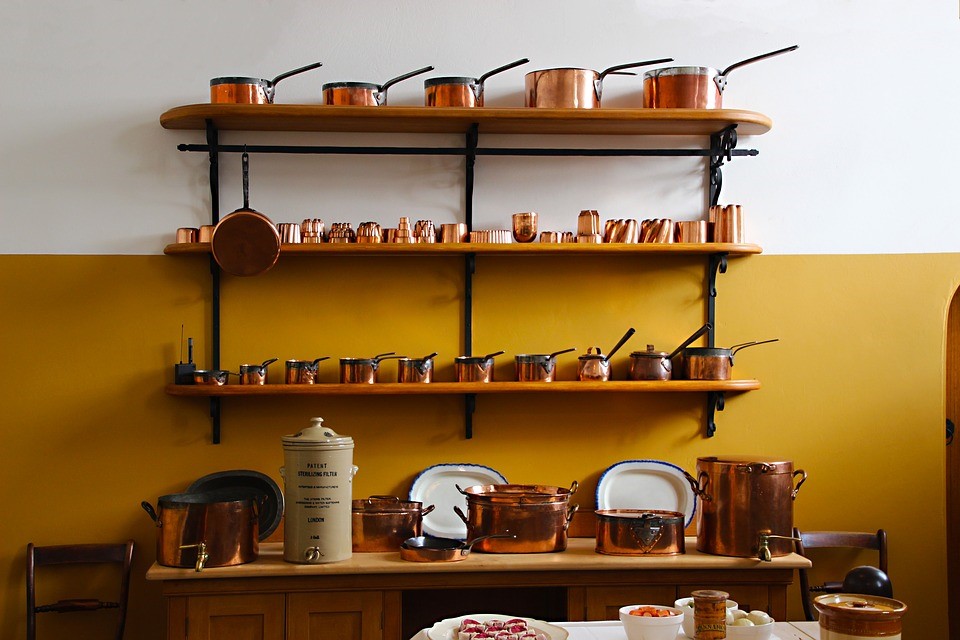According to the U.S. Geological Survey, copper is the third-most consumed industrial metal worldwide, trailing only aluminum and iron. In fact, it wouldn’t be surprising if you had something made of copper in your home right now. Since copper is highly prized for its durability and brilliant shine, it is commonly used in wiring for electrical components, plumbing, cookware, and utensils.
Over time, however, copper will begin to lose its shine and you may begin to notice that sections are starting to become discolored. This is called “tarnish” and it happens because of a natural chemical reaction between copper and oxygen. As a result, copper items begin to look dull. Luckily, this process can be reversed with a little effort on your part-–and the best part is that you can easily do this with everyday items you already have laying around at home.
How do you clean copper metal using household items? Here is a step-by-step guide to help you clean copper, remove tarnish, and make these copper items look like the day you bought them:
1. Identify if the object is lacquered or unlacquered
Due to copper’s propensity to oxidate and tarnish, some manufacturers may decide to add a protective layer to copper objects (lacquered). Before you can start with the actual cleaning, it’s definitely a good idea to check if the object in question has this protective coating or not. This is important because your cleaning method will change based on the object’s finish. This guide will focus on unlacquered copper.
If you have a lacquered copper item, but you’ve noticed that the coat is starting to break down, you may opt to remove the coating and turn the item in question into unlacquered copper. This will allow you to follow the rest of the steps without worry.
2. Determine the extent of the tarnish present on the surface
Next, you’ll need to take a good look at the tarnish present of the copper surface. Not all tarnish are “created equal”. Older items that have been left unmaintained for long periods of time, will have more stubborn tarnish. If this is what you have on your hands, try washing the surface with a special mixture first.
Take a cup of vinegar, four cups of water, a tablespoon of salt. Place this all in a large pot and bring to a boil. Once the water is boiling, place the copper item inside the pot. The vinegar will help “soften” the tarnish on the surface, making it easier to remove in the next step. Generally, you want to soak the copper for a good thirty minutes to an hour to give the vinegar enough time to work its magic.
3. Identify the homemade cleaning agent you want to try
As the cleaning agent boils, now is the perfect time to set up the cleaning solution you want to try. Although there are different types of cleaning solutions for copper, the three methods outlined below are equally effective at cleaning copper sheet metal. Given this, simply choose which one is more convenient for you to make at home:
Fresh Lemon and Salt
Take a fresh lemon out of your refrigerator, as well as some salt (rock, table salt, etc.). Slice the lemon in half, while placing some salt in a small container for easy access. Grab the lemon, dip it in the container with the salt, and start slowly rubbing the lemon slice over the surface of the copper item. If you’re running a little low on lemon juice, squeeze the lemon lightly to release more juice.
Vinegar and Salt
Grab a relatively large container for this method. Pour ¼ cup of salt and vinegar into the container. Make sure that the salt is completely dissolved prior to applying it to the surface of the copper. Once the salt is dissolved, use a clean cloth to apply the cleaning solution to the copper item. When cleaning the tarnish off of the copper, make sure to slowly clean it using long, circular motions for the best results.
Ketchup
Ketchup is more than just something we can put on our hot dogs, burgers, and fries. The use of ketchup in cleaning certain metals has long been documented. This is because the acidic content of ketchup is just enough to loosen up tarnish, making it easier to remove. All you have to do is squirt a bit of ketchup onto a clean rag and start cleaning the surface. It’s that simple!
4. Rinse the copper item under running water
Regardless of how you chose to clean copper metal, all three methods mentioned above will leave some form of residue on the copper items. Make sure you run the copper item under running water to clean up any residue. Otherwise, the residue will only attract more dirt, resulting in the copper becoming tarnished faster. After you’ve washed it, wick away excess moisture with a clean towel or microfiber cloth.


